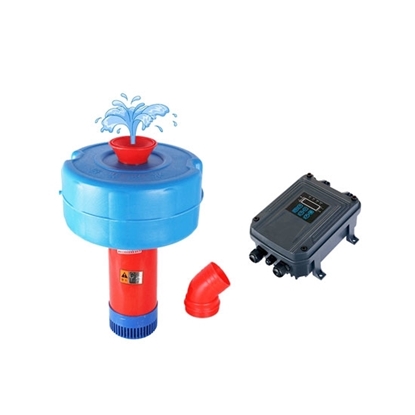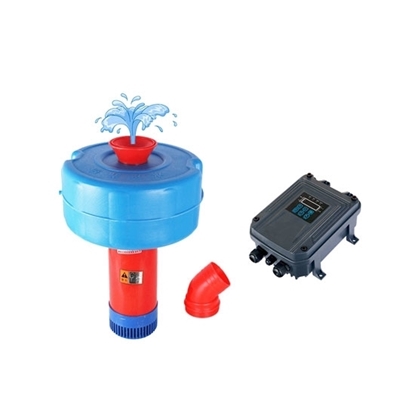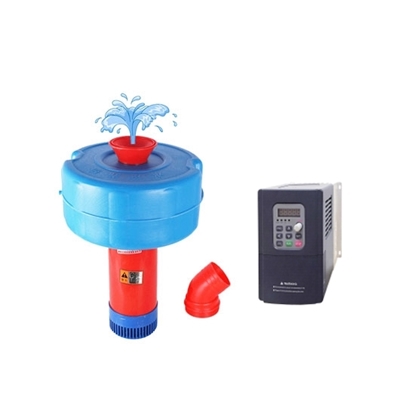Aerator Pump
370W DC 48V Aerator Pump
750W DC 48V Aerator Pump
1100W DC 72V Aerator Pump
1500W DC 96V Aerator Pump
2200W Aerator Pump, AC 220V/DC 300V
An aerator pump is a device used to increase the oxygen levels in water by creating turbulence and agitation. The pump can be used in a variety of applications, including aquariums, fish farms, wastewater treatment plants, and even in home ponds. The main purpose of the aerator pump is to prevent the buildup of harmful gases like carbon dioxide and ammonia, which can be lethal to aquatic life.
Our aerator pumps are available in a wide range of sizes and capacities to suit your specific needs, ATO.com offers aerator pumps from 370W to 2200W, whether you are an experienced fish enthusiast or a novice, an aerator pump is an essential tool for maintaining a healthy aquatic environment.
What is an aerator pump?
An aerator pump is a type of pump that is used to increase the oxygen levels in water, typically in ponds or aquariums. These pumps work by drawing water through an intake, and then expelling it back into the water in the form of a fine mist or bubbles. The increased surface area of the water exposed to air helps to facilitate the exchange of oxygen and carbon dioxide, which is essential for the survival of fish and other aquatic life.
Aerator pumps can come in a variety of shapes and sizes, and may be designed for use in freshwater or saltwater environments. They are often used in conjunction with other types of filtration systems to help maintain a healthy aquatic environment. Some aerator pumps may also include additional features such as UV sterilization or water heating capabilities.
How does an aerator pump work?
An aerator pump is a device used to increase the oxygen levels in water, such as in a fish tank, pond, or aquarium. It works by drawing in air and pumping it into the water, creating bubbles that release oxygen into the water and help to circulate it.
The basic components of an aerator pump include a motor, an impeller, and an air stone or diffuser. The motor drives the impeller, which draws in air and mixes it with water, creating a flow of bubbles. The air stone or diffuser breaks the air into small bubbles, increasing the surface area and maximizing the oxygen transfer to the water.
There are different types of aerator pumps, including submersible and external pumps. Submersible pumps are designed to be fully submerged in the water and are typically used in smaller applications like aquariums. External pumps, on the other hand, are located outside the water and are typically used in larger applications like ponds.
Aerator pumps are essential for maintaining healthy water conditions for fish and aquatic plants, as well as for preventing the growth of harmful bacteria and algae. They also help to improve water clarity and reduce unpleasant odors caused by stagnant water.
What are the benefits of using an aerator pump?
An aerator pump is a device that pumps air into the water to increase the oxygen levels in it. The benefits of using an aerator pump include:
- Improving water quality: An aerator pump can help improve the water quality by increasing the oxygen levels in the water. This is important for maintaining healthy aquatic life, as fish and other aquatic organisms require oxygen to survive.
- Reducing algae growth: Algae growth can be a major problem in bodies of water, as it can deplete the oxygen levels and make the water unsafe for aquatic life. By increasing the oxygen levels in the water, an aerator pump can help reduce algae growth and keep the water clean and clear.
- Preventing fish kills: Fish kills occur when the oxygen levels in the water drop too low, causing fish and other aquatic organisms to suffocate. An aerator pump can help prevent fish kills by increasing the oxygen levels in the water.
- Enhancing the aesthetic appeal: An aerator pump can also enhance the aesthetic appeal of a body of water by creating a beautiful fountain or waterfall. This can make the water more attractive and enjoyable for people to look at and use.
- Increasing the lifespan of the pump: An aerator pump can also help increase the lifespan of other pumps, such as a water pump or a sewage pump, by keeping the water circulating and preventing it from becoming stagnant.
What types of aerator pumps are available?
There are several types of aerator pumps available, including:
- Submersible aerator pumps: These pumps are designed to be submerged in water and are typically used in small ponds or aquariums.
- Surface aerator pumps: These pumps sit on the surface of the water and create a spray or fountain to aerate the water.
- Diffused aerator pumps: These pumps push air through diffusers that are placed at the bottom of a pond or lake, which releases bubbles and circulates the water.
- Portable aerator pumps: These pumps are designed to be easily moved and are commonly used in live bait wells or for emergency aeration.
- Solar-powered aerator pumps: These pumps are powered by solar energy and can be used in remote locations or areas where electricity is not readily available.
- High-pressure aerator pumps: These pumps are used in industrial applications, such as wastewater treatment plants, and are designed to handle high volumes of water and air.
How to choose the right aerator pump for my needs?
- Choosing the right aerator pump depends on several factors, such as the size of your pond or aquarium, the number of fish, and the types of aquatic plants you have. Here are some steps to help you choose the right aerator pump:
- Determine the size of your pond or aquarium: The size of your pond or aquarium will help you determine the appropriate size of the aerator pump. A good rule of thumb is to choose a pump that can circulate the water in your pond or aquarium at least once every hour.
- Consider the depth of your pond or aquarium: The deeper your pond or aquarium, the more powerful the aerator pump you will need. A deeper pond or aquarium requires more pressure to circulate the water properly.
- Decide on the type of aerator pump: There are two types of aerator pumps, submersible and external. Submersible pumps are placed directly in the water, while external pumps are placed outside the water and use a hose to circulate the water. Submersible pumps are generally more efficient but may require more maintenance.
- Look for energy-efficient options: Aerators can consume a lot of energy, so it's essential to choose an energy-efficient option. Look for pumps with energy-efficient motors or those that have been certified by Energy Star.
- Consider the noise level: Some aerator pumps can be noisy, so consider the noise level when choosing a pump. If you plan to keep your aquarium or pond in a quiet area, look for pumps with a low decibel rating.
- Check the warranty: Finally, make sure to check the warranty on the aerator pump before making a purchase. A good warranty will protect you against any defects or malfunctions and ensure that you have a reliable pump for years to come.









